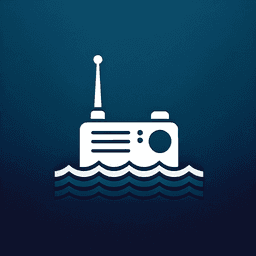
VHF Radio: Definition, Uses, and Examples
January 16, 2025
VHF Radio
A VHF (Very High Frequency) radio is an essential communication tool used in maritime environments. It operates in the frequency range of 30 MHz to 300 MHz, with marine VHF radios typically using frequencies between 156 MHz and 174 MHz. These radios are crucial for ensuring safety and effective communication at sea.
Key Features and Uses:
- Communication: VHF radios are used for ship-to-ship, ship-to-shore, and ship-to-aircraft communication. They are vital for coordinating movements, reporting emergencies, and receiving weather updates.
- Emergency Channel 16: Channel 16 (156.8 MHz) is the international distress frequency. It is monitored by coast guards and is used for emergency communication and initial contact.
- Line of Sight: VHF radios operate on a line-of-sight basis, meaning their range is limited by the curvature of the Earth. Typically, the range is about 20 to 30 nautical miles, depending on the height of the antenna.
- DSC (Digital Selective Calling): Modern VHF radios are equipped with DSC, which allows users to send pre-defined digital messages, including distress alerts, at the push of a button.
- Weather Updates: Many VHF radios can receive weather forecasts and alerts, which are crucial for maritime safety.
Importance for Sailors:
For sailors, a VHF radio is indispensable for navigation and safety. It provides a reliable means of communication in areas where mobile phone coverage is unavailable. Additionally, it is a legal requirement for many vessels to carry a VHF radio, ensuring they can communicate in emergencies.
Overall, VHF radios are a critical component of maritime safety, providing a lifeline for communication and coordination on the water.
Understanding VHF Radio for Maritime Users
VHF (Very High Frequency) radios are essential tools for maritime communication, providing a reliable means of communication between vessels, marinas, bridges, and the Coast Guard. These radios operate in the frequency range of 30 to 300 megahertz, making them ideal for short-range communication, typically up to 20-30 nautical miles, depending on the installation and antenna positioning.
What is VHF Radio in Maritime?
Marine VHF radios are two-way communication devices used on ships and watercraft for bidirectional voice communication. They are the most common method of short-range communication in the marine industry, allowing for instant communication in various scenarios, including emergencies and routine operations.
How Many Nautical Miles is a VHF Radio Range?
The range of a VHF marine radio can vary, but generally, a well-installed system with a properly positioned antenna can cover 20-30 nautical miles for ship-to-ship communication. The range can extend further for ship-to-shore communication, depending on environmental conditions and equipment quality.
Do I Need a License for a VHF Marine Radio?
In the United States, you do not need a license to operate a marine VHF radio on voluntary ships operating domestically. However, it is important to be familiar with the regulations and proper usage to ensure effective communication and compliance with maritime laws.
What VHF Channels Can I Use Without a License?
Some VHF channels can be used without a license, typically those that transmit at 2 watts or less and operate on pre-set frequencies between 151 - 154 MHz in the VHF band. It is crucial to understand which channels are available for public use to avoid interference with licensed communications.
For maritime users, understanding the capabilities and regulations surrounding VHF radios is vital for safe and effective communication on the water. Whether for distress calls, navigation, or routine communication, VHF radios remain a cornerstone of maritime safety and operations.




